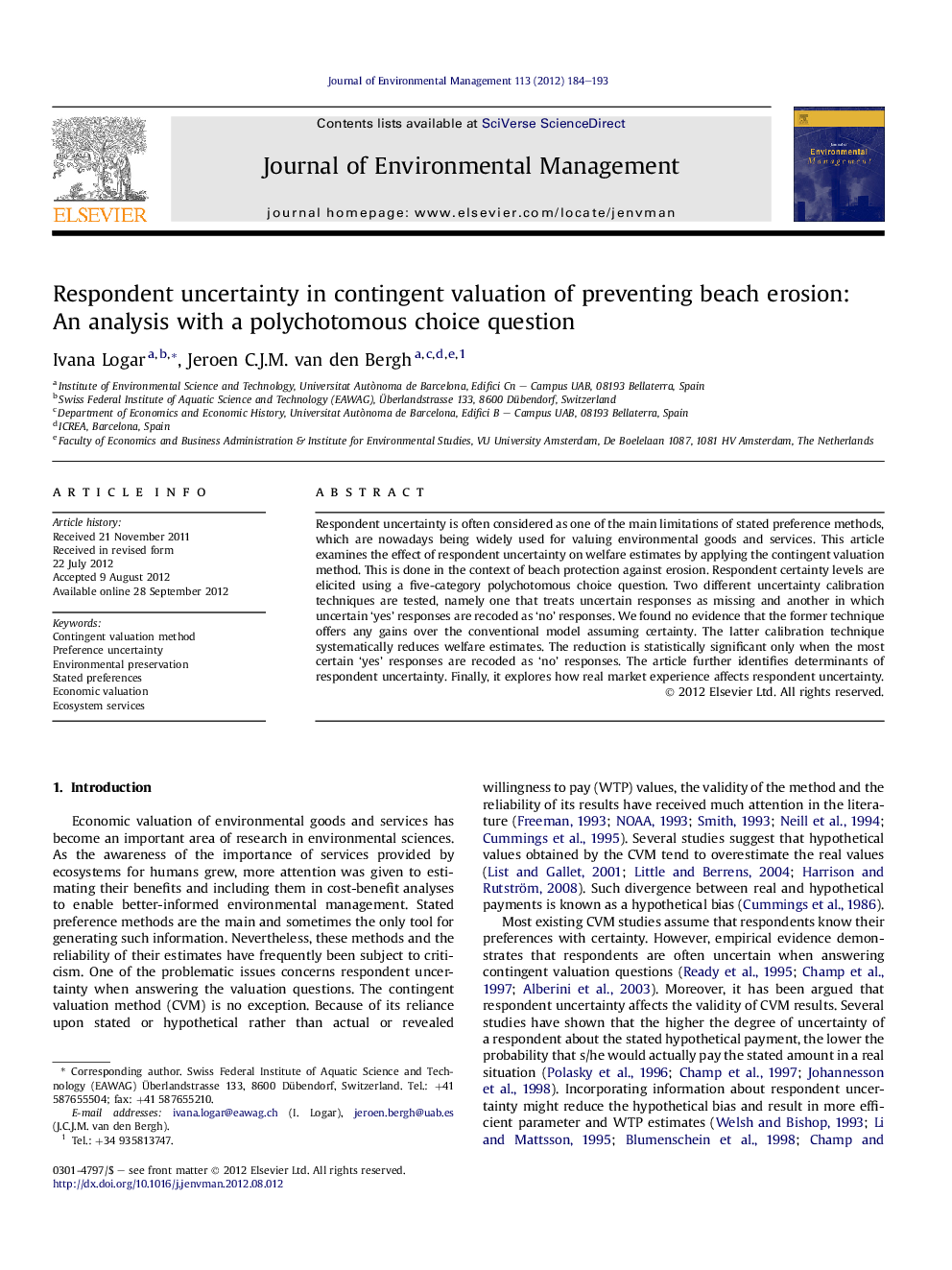| Article ID | Journal | Published Year | Pages | File Type |
|---|---|---|---|---|
| 1056699 | Journal of Environmental Management | 2012 | 10 Pages |
Respondent uncertainty is often considered as one of the main limitations of stated preference methods, which are nowadays being widely used for valuing environmental goods and services. This article examines the effect of respondent uncertainty on welfare estimates by applying the contingent valuation method. This is done in the context of beach protection against erosion. Respondent certainty levels are elicited using a five-category polychotomous choice question. Two different uncertainty calibration techniques are tested, namely one that treats uncertain responses as missing and another in which uncertain ‘yes’ responses are recoded as ‘no’ responses. We found no evidence that the former technique offers any gains over the conventional model assuming certainty. The latter calibration technique systematically reduces welfare estimates. The reduction is statistically significant only when the most certain ‘yes’ responses are recoded as ‘no’ responses. The article further identifies determinants of respondent uncertainty. Finally, it explores how real market experience affects respondent uncertainty.
► We examine the effect of respondent uncertainty on contingent valuation welfare estimates for beach erosion. ► We compare 2 calibration approaches using polychotomous choice (PC) responses. ► We found no advantages of treating uncertain responses as missing over the conventional model assuming certainty. ► We present one of the first analyses of drivers of respondent uncertainty using PC responses. ► We analyze the impact of previous experience with the real beach market and the payment vehicle on respondent uncertainty.
